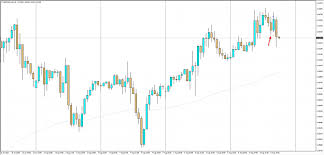Understanding Tesco Share Price Trends and Implications

Introduction
The share price of Tesco, one of the UK’s largest retail giants, is a significant indicator not only of the company’s health but also of the overall retail market’s performance. Understanding Tesco’s share price trends is essential for investors and market analysts, especially in a period marked by fluctuating consumer behaviour and economic uncertainty.
Recent Performance
As of October 2023, Tesco’s share price has shown a fluctuating pattern, following a general trend of recovery from the pandemic lows. Recent reports show that Tesco’s shares have been trading around £2.50, which has seen a slight increase over the past few months as the company adapts to changing market demands. According to the latest quarterly results, Tesco reported a 6% rise in like-for-like sales compared to the previous year, reflecting the company’s robust performance amid ongoing inflationary pressures.
Factors Influencing the Share Price
Several factors have affected Tesco’s share price recently. Primarily, the rise in food prices due to supply chain disruptions and increased operational costs have influenced investor sentiment. Furthermore, Tesco’s strategic initiatives, such as enhancing its online shopping experience and reducing carbon emissions, have garnered positive attention.
Market analysts point to the competitive landscape, with rivals such as Sainsbury’s and Aldi also vying for market share, which can put further pressure on Tesco’s pricing strategies. The company has been proactive, introducing discounts and promotions to attract customers, which also bear implications for profit margins.
Forecasts and Significance
Looking ahead, analysts remain cautiously optimistic about Tesco’s share price trajectory. While the economic environment is laden with uncertainties, the supermarket chain’s strong brand recognition and essential service nature give it a degree of resilience. Experts anticipate that as the market stabilises post-pandemic, Tesco could benefit from a recovery in consumer spending.
Conclusion
The importance of Tesco’s share price lies not only in its direct impact on investor portfolios but also as a barometer for the wider retail sector in the UK. For investors, staying informed about Tesco’s performance offers crucial insights into how the company navigates the evolving landscape. With its continued focus on innovation and adaptability, Tesco is well-positioned to maintain its market leadership, making it an essential watchpoint for both current and prospective investors.









